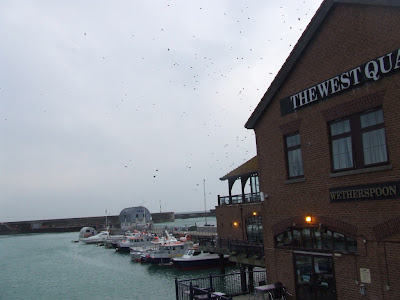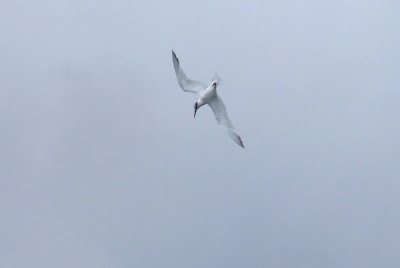The inter-tidal fun day event was as popular as ever, an event I run for the Friends of Shoreham Beach with the help of the countryside rangers. This year we counted over 70 people attending. Before we went down on to the beach we pointed out some of the sea and wading birds that visit the beach to feed on small fish and invertebrates.
This included a cormorant surveying the beach from its perch.
The little egret flying across the beach before landing and hunting in the pools.
The egret would use its foot to disturb the sand and snap up any fish or shrimps.
There were also a few terns, diving for fish
Then we made our way down onto the beach.
The main aim of the event is to introduce people to the fascinating life of the intertidal zone, provide them with some knowledge and skills to come back and explore the beach themselves.
A beach like this has a wealth of marine life waiting to be discovered.
Nestled in amongst the mussels and barnacles on a sea defense in a dog whelk. This predatory sea snail can drill through the shells of mussels and barnacles to fed on the living creature.
Crabs were as popular as ever and generated a lot of questions for the adults and children. There was a lot of questions about the colouration - juvenile crabs have shells that match the habitat they are living in and may be sandy coloured or covered in random blotches of black, white, brown and other colours.
One of the more unusual finds included this snake lock anemone...
...and this compass jellyfish (the latter was a dead stranding).
We provided some small tanks and containers to temporarily keep a few of the animals we discovered so we could talk about them at the top of the beach.
A beadlet anemone
A dog whelk, edible periwinkles and a shore crab
A common shrimp, sandy coloured and flat compared to the transparent prawn. Common shrimps are hunters and can spear small fish, worms and other prey.
Some fisherman had been digging rag worm to use as bait.

A green shore crab
Then after a picnic lunch, the children took part in a beach sculpture activity using pebbles, seaweed and other items they could find on the beach
I was one of the judges, along with Jacky and John from the Friends of Shoreham Beach. Choosing winners was not easy as the designs were very different and each had something special or unusual.
The day was a great success and we managed to avoid the rain which was forecast but did not reach the beach until about an hour after the event ended.

























































